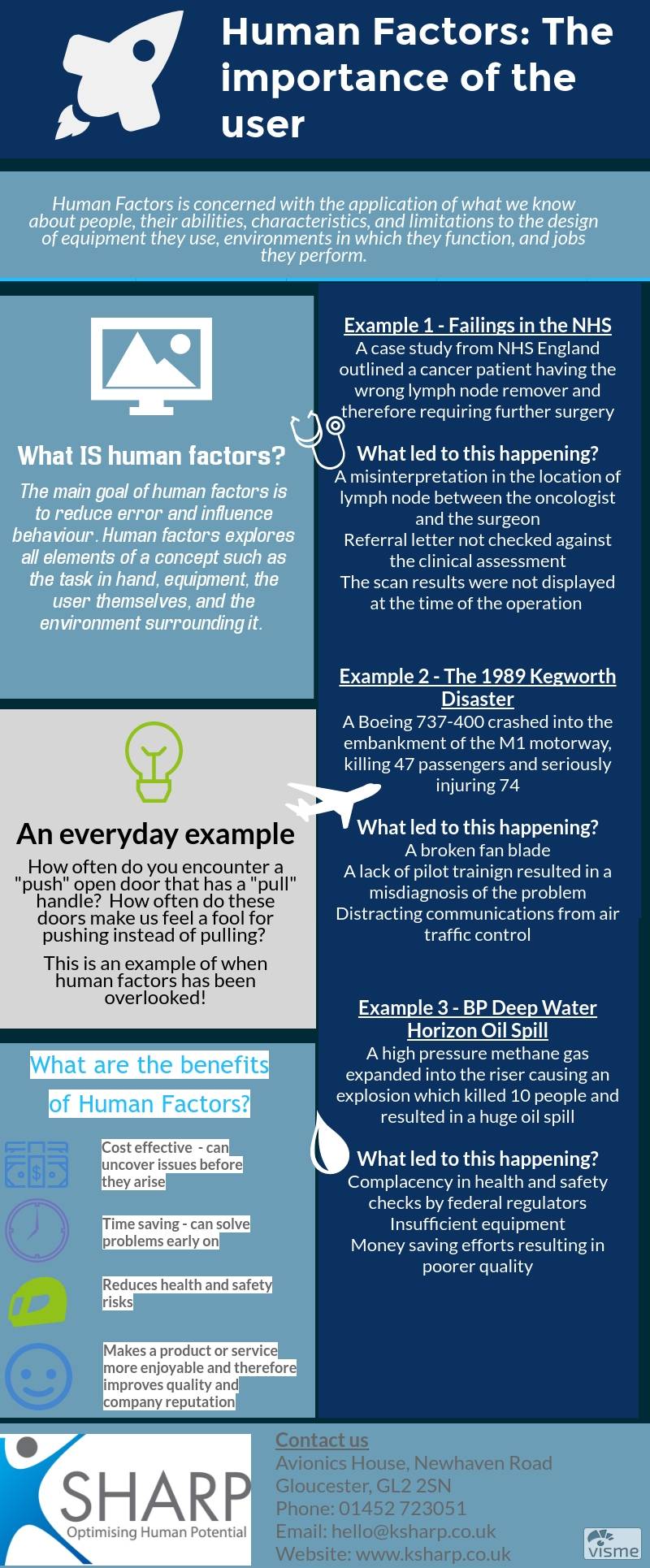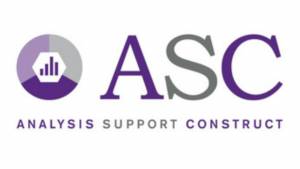


When we tell most people we work in the field of human factors we are met with a blank stare. Explaining human factors into a simplified concept is one we even struggle with. What exactly IS human factors? The main goal of human factors is to reduce error and influence behaviour. Human factors explores all elements of a concept such as the task in hand, equipment, the user themselves, and the environment surrounding it. The Human Factors and Ergonomics Society defines the discipline as; Human Factors is concerned with the application of what we know about people, their abilities, characteristics, and limitations to the design of equipment they use, environments in which they function, and jobs they perform.
An everyday example of when the user has not been considered is when you try to open a door that has a handle to pull but actually requires you to push it to open it. How often do we encounter these doors that make us feel a fool for pushing instead of pulling? And how simple would it have been to NOT have put a pull handle on it in the first place? It is the interaction between a system and people that, if they are not thought about properly, that can have knock on and sometime catastrophic effects. Examples spill over into many industries, for example failings in the NHS are often also the result of a series of omissions that occur in the build up to a ‘critical’ event. An illustration of this can be seen in a case study from NHS England whereby a cancer patient had the wrong lymph node removed and had to undergo a further procedure as a result. A number of factors contributed to this gross error.
The lymph node was identified by the oncologist as being in the right groin, however the surgeon’s interpretation of the ‘groin’ area was different and therefore sought an alternate location. There were also inconsistencies in the referral letter being checked against the clinical assessment which resulted in the neglecting of the disparities. Finally, the scan results were not displayed at the time of the operation as it was not deemed applicable. This is not a first, there are a number of case studies of wrong limbs being amputated. Now we see many “Sharpie Arrows” on patients, providing simple but effective identification, often while the patient is still awake, to ensure coherence of understanding. Another real-life example of when human factors has been overlooked can be seen in the 1989 Kegworth Disaster whereby a Boeing 737-400 crashed on the embankment of the M1 Motorway near Kegworth in Leicestershire, killing 47 passengers and seriously injuring 74. This is now a classic case study when teaching Human Factors because of the compound nature of the problem.
Whilst in flight, the plane obtained a broken fan blade in the left engine which caused a pounding noise, vibration and smoke. The aircraft had new displays fitted, this was the start of the “glass cockpit era” and the previously unreliable indicators had been replaced with very accurate digital displays. However, due to a lack of training the pilots were unaware that the previously inaccurate gauges were now very accurate and this initially confused them as to which engine had malfunctioned, causing them to switch off the incorrect engine. As the plane descended, the engine burst into flames and crash landed. New Scientist pointed out in an article that despite pilot error being initially blamed for the crash, what was a truer was the lack of acknowledgement for the relationship between machines and people, or in other words the plane and its pilots. What was ignored in the review of the Kegworth disaster was that system failure occurs at a number of levels. The initial failure was a technical one – the fan blade in the engine broke. The next failure was a human one – the pilots chose to shut off the wrong engine. In addition, the pilots reported that there were communication failures in that confusing and distracting communications from air traffic control. The final error was that of consistency – both the cabin crew and passengers failed to communicate their observations in seeing smoke coming from the left engine. However, many other factors attributed beyond that of human error. The real lesson of this is that whenever something is attributed to Human Error, this is seen as the explanation, when in reality, it should be the starting point of the investigation as to why the design failed and let the human make the error in the first place. One final example is the BP Deep Water Horizon Oil Spill. This was a marine oil spill in 2010 in the Gulf of Mexico which resulted in the death of 10 people. The Deep Water Horizon was a drilling rig chartered to BP.
At 9:45pm on April 20th 2010, a high pressure methane gas expanded into the riser and rose into the drilling rig where it caused a fire and explosion. Looking into causes of this it is clear to see it was a cascade of minor mistakes and oversights that led to a catastrophic outcome. The rig had no incidents in over 7 years and this had arguably led to a degree of complacency as it was often overlooked by federal regulators. In addition, over the years the drilling was getting deeper and deeper and yet the equipment being used was not being modified to account for this. In a bid to reduce costs, the well had fewer barriers for gas flow as in the short term it saved BP around $10 million, however the costs ended up being much greater in the long term. In another bid to save money, BP had cancelled a contractor that was due to test elements of the rig; they could have potentially identified issues that led to the explosion.
Considering these examples, it is clear to see that if more settings were to adopt the principles of human factors into design and implementation then many of these errors could be avoided. Putting the user at the forefront is beneficial for so many reasons. From a business perspective it is cost effective as it can uncover issues before they arise and avoid them happening all together reducing rework in the short term and the potential for catastrophic failure. It also makes a product or service more enjoyable to use and improves overall quality, therefore delighting the end customer and improving company reputation. And then from a health and safety point of view the benefits are immeasurable as it can massively minimise risk.













